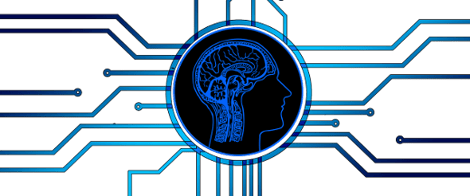How machine learning methods are changing diabetes research and diabetes care
When voice assistants tell us what the weather will be like, when self-driving cars steer through dense city traffic, or when computers sort our digital photo collections by the faces of our families and friends, whenever computers take over these tasks that would have required human intelligence only a few years back, artificial intelligence (AI) is the underlying technology.
Learning from example
In recent years, development of AI has moved forward fast and has found its way into everyday applications, mainly by the evolution in the fields of “machine learning” and “deep learning”:
In “traditional” programming, a developer defines a set of rules and algorithms that a computer will use to find a solution to a given problem. This approach depends on the developer’s knowledge and understanding of the aspects of the problem and the rules that apply.
In contrast, machine learning and deep learning rely on artificial neural networks (ANN) to perceive aspects of a problem independently, to examine relationships and to take actions for maximizing the chances of successfully achieving a goal. ANNs "learn" from experience, generally without being programmed with task-specific rules. By presenting multiple examples, an ANN will automatically generate identifying characteristics from the examples that they process [1].
As in many other areas, the interest in AI has grown exponentially in medical research over the past two decades with a threefold increase of studies on AI applications during the last three years alone, and there has been an increasing interest in the research of AI in the prediction, diagnosis and management of diabetes [2, 3].
Learning to predict risks
Many studies have applied methods of AI to diagnose diabetes and its complications or predict individual risks based on large sets of clinical data, often including medical images.
Researchers have studied AI based methods to predict the risk of diabetic complications such as neuropathy or kidney disease or cardiovascular events from large sets of data [4, 5].
An earlier blog post discussed the progress of detecting retinopathy in retinal fundus photography using AI methods. One notable publication described a deep machine learning algorithm trained with a data set of 128,795 retinal images resulting in a sensitivity of about 97% and a specificity of about 93.5 % for the detection of referable retinopathy [6].
Using AI in daily diabetes management:
During the last few years, AI methods have found their way into daily self-management of diabetes, mainly in the form of smartphone apps and wearables such as smart watches: For example, food recognition apps use machine learning methods and cloud-based image analyzing and may help people with diabetes to make more informed food choices and insulin treatment decisions[7]. Activity recognition apps using machine learning methods have been introduced which identify and quantify lifestyle activity based on sensor data from smartphones or wearables and may help making better activity and treatment choices in daily self-management of diabetes [8].
A recent study used deep learning methods for the detection of hypoglycemia based on ECG data. The authors point out that such systems are very promising as ECG can be recorded, transmitted and processed quite easily and ECG sensors can be embodied in every-day-use objects such as smartwatches [9].
Marketed real-time glucose monitoring systems such Medtronic’s Guardian Connect also use AI methods to create algorithms to enable a better prediction of blood glucose fluctuations and to alert the user of any imminent hypoglycemia risk.
Studies have researched how machine learning can be used to tune automated insulin delivery systems to adjust basal rates and carbohydrate ratios [10].
Where do we go from here?
In spite of high hopes in future use of AI methods in treatment and diagnosis of diabetes, there are a number of drawbacks: AI methods need to be well-trained which requires huge training sets with data from many patients. This can be a concern with regard to privacy and personal data protection. Moreover, databases with enormous quantities of reliable and consistent data are often scarce [11]. Another major challenge may be a lack of technical interoperability between systems. Often, there are also limitations in reproducing and validating results from published studies, as source codes are often not shared, and even when using the same code, the system performance may still vary depending on the data that is used for training the algorithm [3].
Still, there is a lot of hope that AI methods may improve the lives of people living with diabetes in the future and that this development will help us to better understand and manage the challenges of this complex condition.




